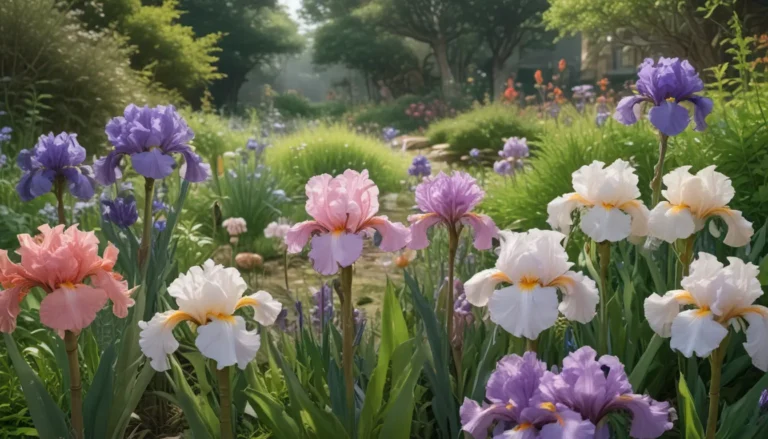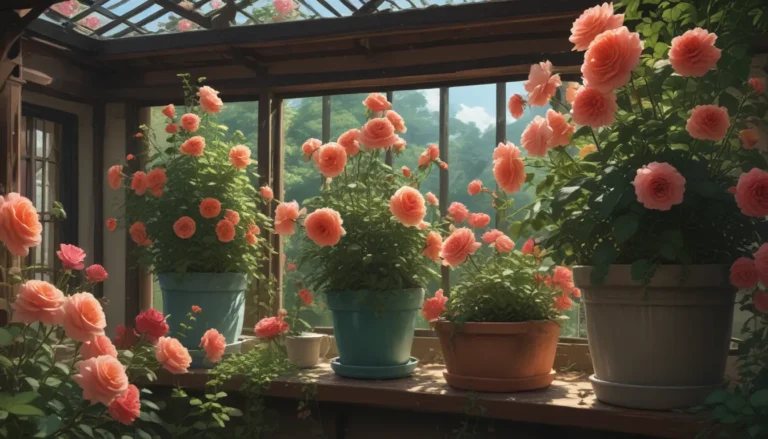The Ultimate Guide to Growing Beautiful Air Plants for Living Wall Art

Have you ever marveled at the beauty of Spanish moss hanging from trees in the American South? Let’s delve into the fascinating world of air plants, specifically Tillandsia, and explore how you can incorporate them into your home as living wall art.
Tillandsia, commonly known as air plants, are currently a popular choice for adding a touch of exotic flair to home décor and fashion accessories. As members of the bromeliad family, which also includes pineapples, air plants are native to Mexico, South, and Central America. Fun fact: they have even naturalized in some regions of North America, adding a unique touch to the landscape.
Discovering the World of Air Plants
Before you dive into growing air plants, it’s essential to understand the two main types available for home gardeners: xeric and mesic.
Xeric Air Plants
Xeric air plants thrive in desert-like conditions where sunlight is intense, and moisture is scarce. Just like xerophytes, plants that require minimal water, xeric Tillandsia have adapted to store water in their spongy leaves, similar to cacti and succulents. They achieve this through trichomes, which are fibrous hairs or crystalline growths on their leaves that help them absorb moisture and protect them from the sun.
Xeric air plants are an excellent choice for those looking for low-maintenance plants that can thrive in arid conditions.
Mesic Air Plants
In contrast, mesic air plants come from areas where drought is not an issue, such as humid rainforests with filtered sunlight. Unlike xeric varieties, mesic air plants lack the hairy or crystalline features but still have trichomes that allow them to absorb water. Their shiny, glossy appearance sets them apart from their xeric counterparts.
Mesic air plants typically require more frequent watering compared to xeric varieties, making them a great choice for those who enjoy tending to their plants regularly.
Air plants come in a wide range of shapes, colors, and textures, making them a versatile addition to any home. They complement succulents beautifully and can be easily moved around to change up your décor effortlessly.
Essential Care Tips for Thriving Air Plants
While air plants don’t need soil to grow, they do require adequate air circulation, moisture, and sunlight to thrive. Understanding their basic care requirements is crucial for keeping your air plants healthy and vibrant.
Air Circulation
Proper air circulation is essential for air plants to thrive. While they enjoy humidity, excess moisture can lead to rotting. Ensure optimal air flow by avoiding overcrowding and overwatering your plants.
Watering
There are two primary methods of watering air plants: misting and soaking. Misting your plants once or twice a week by spraying the tops and undersides of the leaves is usually sufficient. Additionally, soaking your air plants in water allows for thorough hydration, especially for new plants acclimating to their environment.
Sunlight Exposure
Both mesic and xeric air plants prefer indirect sunlight to thrive. Direct sunlight can cause their colors to fade, leaves to dry out, or even lead to sunburn. Find a balance of light exposure that suits your plants to ensure their health and vitality.
Welcoming Your Air Plants Home
Getting started with air plants is an exciting adventure, and there are numerous ways to acquire these unique plants for your collection. Consider purchasing an assortment of air plants like the CTS Air Plants 10-Pack Assorted Tillandsia Easy Care Collection available on Amazon. These collections offer a variety of sizes and shapes, perfect for beginners and seasoned air plant enthusiasts alike.
Another option is to explore the assorted mixes of air plants available from Succulent Gardens. These seasonal assortments provide a diverse selection of air plants to create a dynamic and visually appealing display in your home.
When you bring your new air plants home, give them a good soak in tepid water to rehydrate them after transit. Allow them to dry on paper towels to remove excess water before placing them in their designated spot. Remember to mist your air plants regularly and watch for signs of overexposure to sunlight or underwatering.
Incorporating Air Plants into Your Living Spaces
Air plants are not only beautiful additions to any home but also serve a practical purpose by filtering toxins from the air. Their whimsical and quirky nature, combined with their low maintenance requirements, make them an ideal choice for decorating your living spaces.
There are endless possibilities for incorporating air plants into your home décor:
- Suspended from Wire Hangers: Create intricate displays by suspending air plants from delicately wound wires.
- Living Wall Art: Group air plants together to create living wall sculptures that add interest and texture to your walls.
- Natural Displays: Arrange air plants on sun-bleached driftwood branches, inside seashells, or intertwined into living wreaths for a natural aesthetic.
- Table Centerpieces: Use air plants in floral arrangements or as corsages for special occasions to add a touch of elegance.
- Outdoor Décor: Bring a tropical feel to your outdoor living spaces by incorporating air plants into your garden design.
The versatility of air plants allows you to experiment with various display options and get creative with how you showcase these unique plants in your home. Whether you’re hosting a dinner party or simply looking to add a touch of greenery to your living spaces, air plants offer endless possibilities for showcasing your creativity.
Conclusion
In conclusion, air plants are not just plants; they are works of art that bring life and vibrancy to your living spaces. By understanding their unique care requirements and creative display options, you can enjoy the beauty and versatility of air plants in your home.
Next time you see Spanish moss hanging from trees in the southern regions, you’ll have a new appreciation for Tillandsia and their remarkable ability to thrive in diverse environments. Embrace the exotic beauty of air plants and let them transform your living spaces into a haven of natural artistry.
Do you have air plants in your home? Share your creative ideas for displaying and caring for them in the comments below. Let’s inspire each other to elevate our homes with these stunning and versatile plants!





